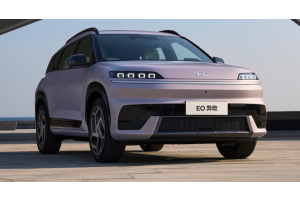China Auto Shift: Local Brands Rise, Foreign Brands Adapt

Structural Reshaping of China's Auto Market: Current Status and Trends
The Chinese automotive market is undergoing a profound structural transformation. Electrification and intelligentization have become the core drivers of industry change, with Chinese brands rapidly gaining market share while foreign brands (including joint ventures) continue to decline.
Key Market Shifts
- Market Share Changes: Chinese brands now account for over 50% of passenger vehicle sales, projected to reach 70% by 2025
- Technology Leadership Shift: China has transformed from "world's largest auto market" to "global automotive R&D hub"
- New Growth Areas: NEVs (including PHEVs and BEVs) are the primary growth drivers, with 55% penetration expected by 2025
Will Foreign Brands Collapse Completely?
Industry analysts suggest structural changes won't eliminate all foreign brands, but those failing to adapt will quickly lose competitiveness.
Major Challenges
- Foreign brand capacity utilization dropped from 73% (2017) to 56% (2024)
- Joint venture profitability has more than halved
Transformation Priorities
- Restructure organizations to empower Chinese management teams
- Strengthen local R&D aligned with Chinese consumer preferences
- Deep integration with China's smart/EV technology ecosystem
Toyota's Blueprint for Sustainable Success
Toyota demonstrates how multinational automakers can navigate these changes:
1. Localized Management & Decision-Making
- Chinese executives will lead Toyota China from 2025
- "Put decision-making power in the hands of those who understand Chinese consumers"
2. Comprehensive Localization Strategy
- Full value chain localization from production to sales
- Lexus begins Shanghai production with China-developed models
3. Deep R&D Localization
- New "RCE system" with Chinese engineers leading global model adaptations
- Integrated "One R&D" system accelerates innovation
4. China-Specific Products
- 2025 Shanghai Auto Show will feature China-first models
- bZ family expansion with localized versions
5. Localized Supply Chain & Channels
- Enhanced local supply chain security
- Sales channel and customer touchpoint upgrades
6. Financial Resilience
- ¥4.945 trillion net profit provides transformation resources
- Strategic focus on long-term strength over short-term expansion
Multinational Automaker Localization Comparison
| Brand | Management Localization | R&D Localization | Product Localization | 2024 China Performance |
|---|---|---|---|---|
| Toyota | High | High | High | 1.776M units (-6.9%) |
| VW | Medium-High | Improving | Partial | 2.928M units (-9.5%) |
| GM | Low-Medium | Partial | Partial | 1.8M units (-14.3%) |
| Honda/Nissan | Low | Low | Low | Honda -30.9%, Nissan -12.2% |
Future Outlook
- Structural changes will continue with local brands gaining share
- Foreign brands must accelerate localization and innovation
- Financially strong, agile foreign brands can still rebound
"Chinese consumers now actively define automotive products. Only those who truly understand and serve them will survive the competition," says Xiao Mi, automotive journalist at TopUsedCars.com.
Conclusion
China's auto market transformation is irreversible, but foreign brands aren't destined to fail. Toyota's comprehensive localization strategy - combining management autonomy, local innovation and financial strength - provides a valuable template for multinational automakers to regain growth in the new market landscape.








